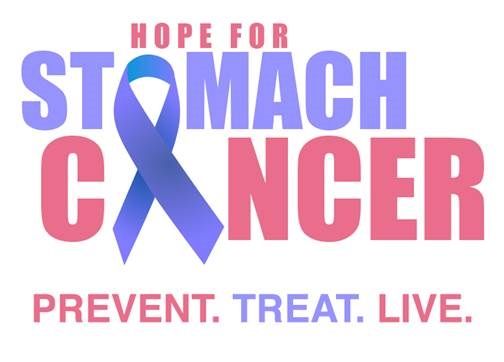- About Us
- Advertise / Support
- Editorial Board
- Contact Us
- CancerNetwork.com
- TargetedOnc.com
- OncLive.com
- OncNursingNews.com
- Terms & Conditions
- Privacy
- Do Not Sell My Information
- Washington My Health My Data
© 2025 MJH Life Sciences™ and CURE - Oncology & Cancer News for Patients & Caregivers. All rights reserved.
Staying Aware of Gastric Cancer Risk Factors in Young Adults

Antonia DePace, Editor for CURE®, has covered medical news for MJH Life Sciences, CURE®’s parent company, since 2021. She has written for EatingWell, Natural Awakenings Greater Boston, The Boston Globe and a variety of other lifestyle publications. She attended Emerson College, where she studied journalism and publishing. Antonia enjoys traveling, cooking, yoga and all things health and wellness. Follow her on Instagram @antonialdepace or email her at adepace@curetoday.com
On behalf of Hope for Stomach Cancer, Dr. Yanghee Woo speaks with CURE® about risk factors for gastric cancer and the alarming rise in cases in young adults.
Although increasing cases of gastric cancer in adults 40 years old and younger remain unexplained, unmodifiable risk factors — the ones that someone is born with — are likely the cause, according to Dr. Yanghee Woo, director of the Gastroenterology Minimally Invasive Therapy Program and associate clinical professor in the division of surgical oncology at City of Hope in Duarte, California.
“Like other cancers, we can categorize gastric cancer risk factors into two groups: the modifiable risk factors, (which are) mostly environmental (and are) things that we can change, and the unmodifiable risk factors ... that we are mostly born with and either we cannot change them or they’re not that easily changeable,” said Woo. “Young gastric cancer patients are more likely to possess a lot of the unmodifiable features with the additional exposure to the modifiable risks.”
In an interview with CURE®, on behalf of Hope for Stomach Cancer for its “Speaking Out” video series, Woo discussed the risk factors associated with gastric cancer in young adults, how age plays a role in prognosis and symptoms to watch for.
Q: Can you explain the rise in gastric cancer in young adults?
A: The reason for this rise in the incidence of gastric cancer in young adults actually remains unexplained because there are (only) a few studies that have investigated gastric cancer in people under the age of 40. (Very) little (is) known about why there is currently a rise in gastric cancer in this group, but efforts are being made to address this alarming observation. This trend is especially concerning because it goes against the decreasing overall numbers of gastric cancer cases in the United States and worldwide. For the past several decades, there had been a very steady decrease in the incidence of gastric cancer. ... As we investigate the reasons for this observation, though, the more urgent issue is to be aware of the risk factors that lead to the development of gastric cancer and what we can do about it in the young.
What are the unmodifiable risk factors of gastric cancer in young adults?
Under the age of 40, you have not been exposed to the environmental risk factors as much as the older population, (so) it is most likely the unmodifiable risk factors that are dominant. For example, the average age of (patients with) gastric cancer in the United States is 68. They have had a lot of exposure to the environmental risk factors. So what are the nonmodifiable inherited risk factors that put somebody at an increased risk? Ethnicity; (specifically), ethnicity that is not Hispanic White. If you’re Hispanic, if you’re Asian or if you’re a Black (person), you are at an increased risk of having gastric cancer at a younger age. If you have a family history of more than one family member, then you are at a higher risk than your friends who do not have family members who developed gastric cancer. If you are male, you are more likely — whether you’re young or old — to have gastric cancer. Then there are (inherited/ familial) genetic risks.
What is the difference between gastric cancer in a young adult versus an older adult?
There are significant differences between patients who are older with gastric cancer and patients who are under the age of 40. We recently published a study that we performed in the California Cancer Registry, which is a (statewide) registry of (patients with cancer). We analyzed the difference, and we found that compared with older patients, young patients under 40 are more likely to be Hispanic (and) more likely to possess aggressive tumors that have poorly differentiated histology. They’re higher grade, meaning they’re more aggressive. These younger patients are more likely to present with metastatic stage 4 disease with the primary tumor in the stomach ... that has already spread to the peritoneum, which is much more difficult to treat.
What is the prognosis in young adults compared with that of older adults?
There’s some good news and some bad news. The good news is that for each stage of diagnosis, meaning the extent of disease progression of gastric cancer at the time of diagnosis, there is no difference in outcome per stage whether you are young (or) old. It’s just that more younger patients are receiving diagnoses in the more advanced stages, giving them the overall worst prognosis. ( The) good news is that if you (receive a diagnosis) at a young age (of) a very early cancer, like stage 1 cancer, you actually do better. Your prognosis is better than that of the older patient population, probably because stage 1 cancer is usually curable and you are healthier as a younger person and can tolerate the treatments better. In general, age is not an independent predictor of gastric cancer survival, meaning other factors have a stronger impact on patient outcome — for example, the stage at the time of diagnosis; how you respond to the therapy; how good your surgery is (and) how responsive (the) tumor is to the chemotherapy and, possibly, other immunotherapeutic agents that are new to the treatment of gastric cancer. Your response to those will predict your overall outcome, not necessarily your age.
Why is it important for young adults to understand this rise in cases?
Awareness is actually the first step to prevention and early diagnosis in these patients. We need to recognize that there are young adults at risk for gastric cancer and evaluate the (unknown) risk factors so we can address this cancer in the young and prevent cancer. It is very difficult to diagnose gastric cancer at an early stage without having suspected gastric cancer when the patients come with these symptoms. Early stages of gastric cancer are completely asymptomatic. Eighty percent of patients with gastric cancer don’t have symptoms initially. (Once diagnosed, it is not unusual that) the alarming symptoms of weight loss, inability to eat, the belly getting big, pain and nausea ... have gone on for a fairly long time. And at that time, it’s a more advanced stage of disease. So the data (are) clear that we either do not suspect this when patients who are young present with symptoms associated with gastric cancer or we dismiss it or treat it a different way. We need to be on high alert in recognizing these symptoms as well as risk factors in the young patient population.
For more news on cancer updates, research and education, don’t forget to subscribe to CURE®’s newsletters here.
This Speaking Out video series is supported by Bristol Myers Squibb.
 Download Issue : 2021 Rare Cancers Special Issue
Download Issue : 2021 Rare Cancers Special IssueRelated Content:




